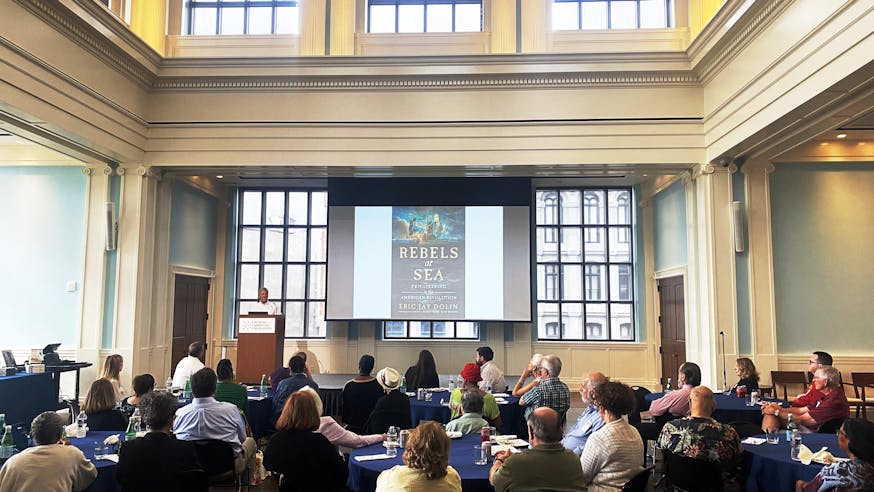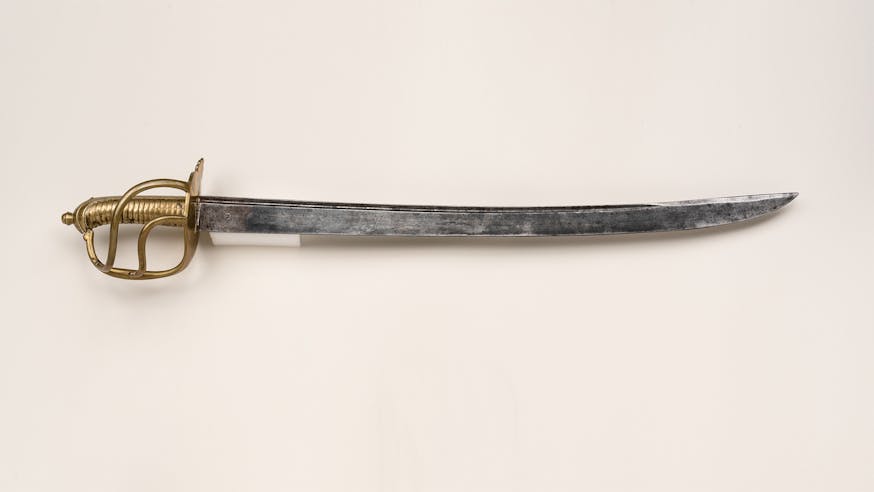Bar Shot, Chain Shot, and Cannonball


Much of the American Revolution took place on the seas between a budding Continental Navy and the powerful British Royal Navy. Naval gunners on both sides fired a range of specialized projectiles from their cannons to disable or destroy enemy vessels. Solid iron “round shot” was used to pound and penetrate the heavy wooden planks that made up a ship’s hull. To destroy the rigging, masts, and sails of a ship, naval gunners used the deadly “bar shot” and “chain shot.” Either two cannonballs or two halves of a cannonball were attached to each other with a strong iron bar or chain and when fired created a spinning motion that would destroy anything in its path. Cramped together above and below decks, sailors suffered horrific wounds from the projectiles and the wooden splinters that erupted from their battered ships after impact.
Object Details
-
Bar Shot, Chain Shot, and Cannonball
Unidentified Maker
Late 1700s
Iron
Museum of the American Revolution, 2003.00.0940 and .0941, 2007.00.0335 (Benninghoff Collection)
Tags
Learn More

Black Founders & the War at Sea with Author Eric Jay Dolin

Give Me a Fast Ship
